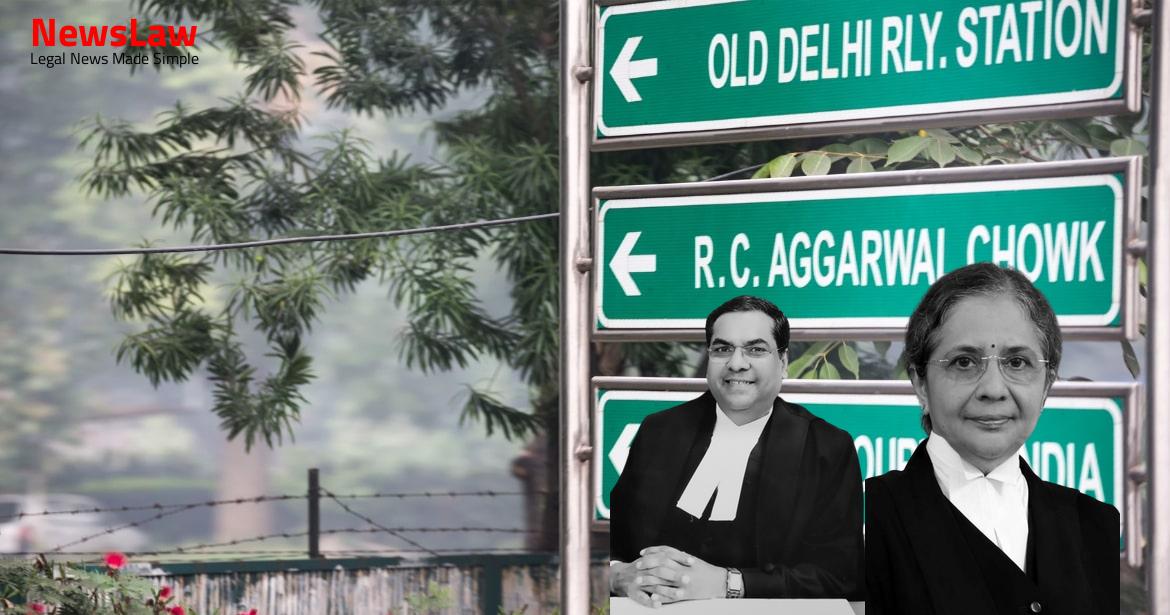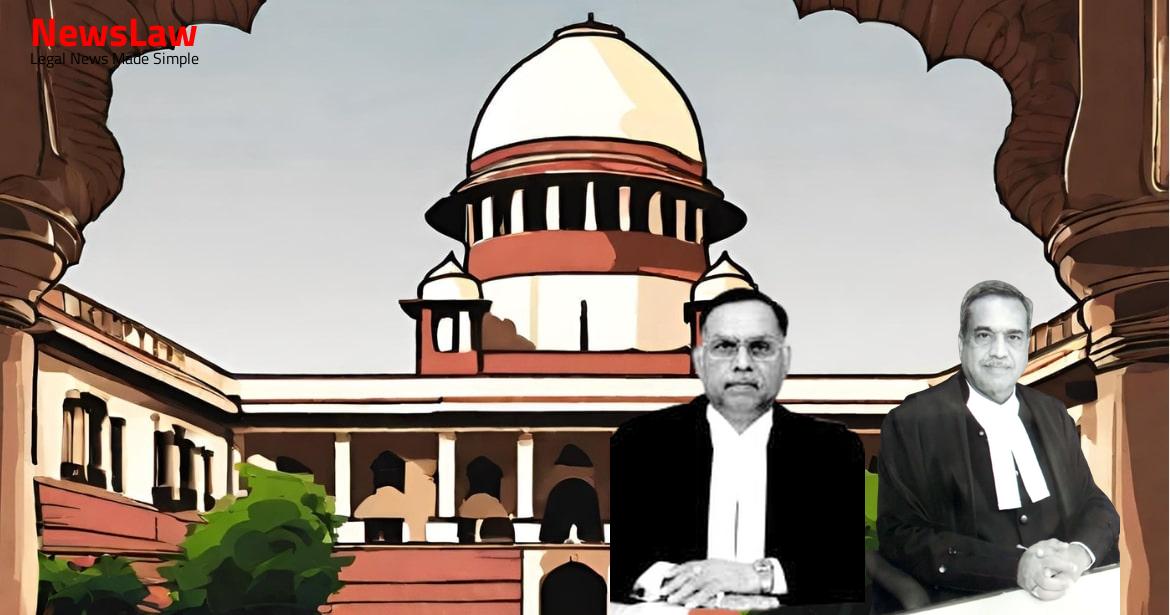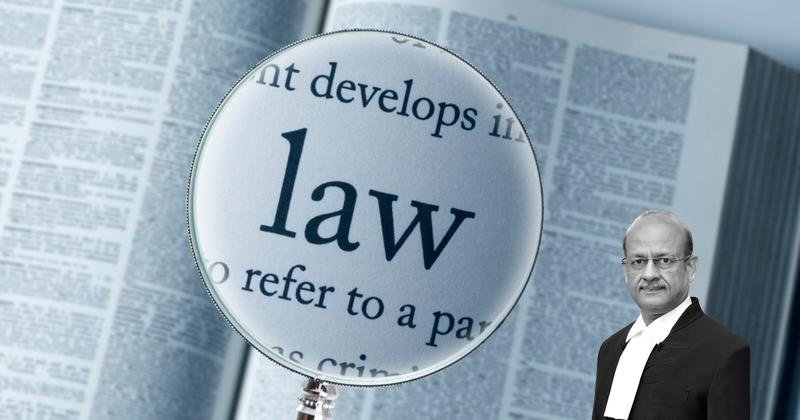Delve into a comprehensive review of burden of proof in criminal cases based on circumstantial evidence. The court’s meticulous examination of the entire chain of circumstances, exclusion of alternative hypotheses, and the distinction between ‘may be’ and ‘must be’ in establishing guilt highlights the rigorous legal analysis required for conviction. The focus on ensuring concrete evidence and eliminating doubts underscores the core principles of criminal law that determine the burden of proof in such cases.
Facts
- Both the appellants-accused were convicted by the Sessions Court for the offence under Section 302 read with Section 34 and Section 201 of the IPC.
- They were sentenced to undergo life imprisonment and pay a fine of Rs. 20,000 for the offence under Section 302 read with Section 34.
- They were also sentenced to undergo rigorous imprisonment for six years and pay a fine of Rs. 10,000 for the offence under Section 201 of the IPC.
- The present appeal filed by the appellants-accused was from the Judgment dated 29 August, 2013 passed by the High Court of Uttarakhand.
- The High Court dismissed the appeal and upheld the conviction and sentence awarded by the District & Sessions Judge, Tehri Garhwal in Sessions Trial No 22/2009.
- The Trial Court’s order of conviction and sentencing was dated 11.10.2010 and was upheld by the High Court in the impugned order.
- The prosecution led oral evidence by examining 11 witnesses to prove the charges against the accused.
- The accused Satye Singh denied the charges against him and stated that there was no custom of dowry in their society and that he did not know how his wife Shashi died.
- The father of the deceased arrived on the spot after receiving a phone call from Satye Singh.
- The further investigation was handed over to the Naib Tehsildar, Gunanand Bahuguna (PW-10) after the investigating officer was transferred.
- The charge-sheet was filed against the accused Satye Singh and Indra Devi, with accused Sangeeta Devi shown as absconding, for offenses under Sections 302 and 201 of the IPC.
- The accused Indra Devi claimed she was falsely implicated in the case as she was the mother of Satye Singh.
- The case was committed to the Sessions Court, Tehri Garhwal for trial after inquest proceedings were conducted and the dead body was taken for post-mortem.
- A written complaint was given by Sharad Singh against the accused, which was registered as the Case Crime No. 16/2009.
- Shashi Devi had married Satye Singh four years prior to the incident, which occurred between the evening of 27.06.2009 to the morning of 28.06.2009.
- Naib Tehsildar Virendra Raj (PW-11) was informed about the death of a lady due to burns at 8.40 a.m. on 28.06.2009.
- The Naib Tehsildar arrested Satye Singh after drawing the panchnama and other proceedings upon reaching the spot and seeing the deceased’s burnt body in the hut.
Also Read: Legal Analysis of National Food Security Act Implementation
Arguments
- The argument put forth by the Additional Solicitor General, relying on Deonandan Mishra v. State of Bihar, is contested.
- The interpretation given by the Additional Solicitor General of the mentioned case is disagreed with.
- The core argument is that a false defence case would strengthen the prosecution case.
- The defence counsel vehemently opposes the conviction of the appellants, husband and mother-in-law of the deceased, citing lack of cogent evidence.
- The appellants were allegedly convicted based on suspicion, conjectures, and surmises.
- The defense counsel argues that the case relies on circumstantial evidence with no eyewitnesses to the incident.
- It is contended that the prosecution failed to prove the entire chain of circumstances leading to the guilt of the accused.
- The prosecution supposedly did not prove the details of how the incident occurred or where the deceased was allegedly killed and burnt.
- Accused tried to mislead the Investigating Officer by claiming suicide, but evidence proved injuries were ante-mortem
- Accused failed to explain why the victim left home and what they did the entire night she was missing
- Prosecution witnesses testified to harassment of victim by accused and a quarrel prior to the incident
- Concurrent findings of facts by lower courts suggest limited scope for reevaluation under Article 136
Also Read: High Court Vacates Interim Orders in FIR Investigation Case
Analysis
- The case heavily relies on circumstantial evidence as there is no eyewitness to the incident.
- The prosecution’s claim that the deceased committed suicide was not accepted by the courts due to clear evidence from the post-mortem report.
- The post-mortem report indicated specific injuries on the deceased that were deemed as ante-mortem in nature.
- The prosecution failed to provide substantial evidence connecting the accused to the alleged crime.
- Witness testimonies did not offer concrete details about how, when, and where the deceased was killed and burnt.
- The investigation conducted by the officers was criticized for being cursory and unsatisfactory.
- The burden of proof on the accused was discussed, emphasizing that it is not the accused’s responsibility to prove innocence beyond reasonable doubt.
- The presence of multiple essential conditions for using a false explanation as an additional link in the case was highlighted.
- The role of various witnesses and their lack of substantial knowledge about the incident was noted.
- The overall analysis of the judgment suggests a lack of concrete evidence to conclusively establish the guilt of the accused.
- In criminal cases, the burden of proof is on the prosecution, and Section 106 of the Evidence Act is not meant to relieve the prosecution from this duty.
- Section 106 is intended for exceptional cases where it is disproportionately difficult for the prosecution to prove facts specifically within the knowledge of the accused.
- There must be a complete chain of evidence that leaves no reasonable doubt about the accused’s guilt for conviction.
- The chain of evidence should show, in all human probability, that the accused must have committed the act.
- It is essential to exclude every possible hypothesis except the guilt of the accused when evaluating circumstantial evidence.
- The facts must be consistent only with the hypothesis of the accused’s guilt and not explainable by any other hypothesis.
- Conviction based on circumstantial evidence requires all links in the chain to point to the guilt of the accused, negating every hypothesis of innocence.
- The mental distance between ‘may be’ and ‘must be’ is significant, separating vague conjectures from sure conclusions.
- Absence of cogent evidence by the prosecution to prove the entire chain of circumstances
- Court’s conclusion that the accused committed the alleged crime was based on suspicion, conjectures, and surmises
- Trial Court and High Court committed a gross error of law in convicting the accused
- Impugned judgments quashed and set aside
- Prosecution failed to prove the basic facts alleged against the accused
- Burden could not be shifted to the accused under section 106 of the Evidence Act
Also Read: Conviction upheld in High Court in a case of deadly assault
Decision
- Accused acquitted from the charges
- Directed to be set free forthwith
- Appeal allowed
Case Title: SATYE SINGH Vs. STATE OF UTTARAKHAND (2022 INSC 185)
Case Number: Crl.A. No.-002374-002374 / 2014



